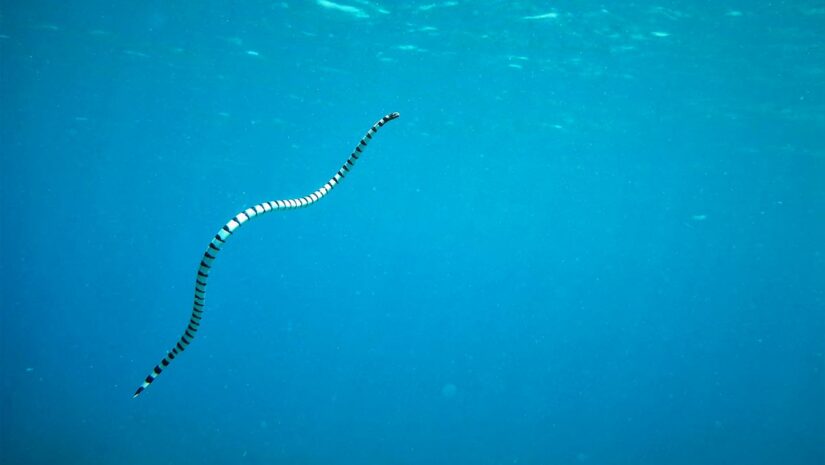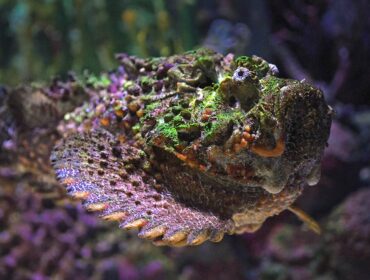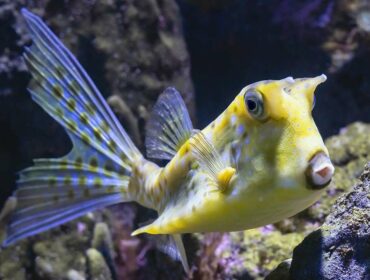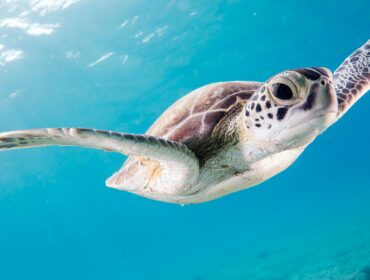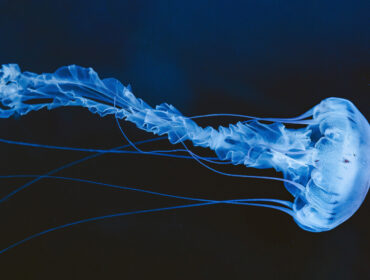Sea Snakes even though found quite abundantly in the Indo-pacific oceans are still a rather unusual sight for divers often provoking a sense of fear as they are all known to be venomous and secondly because there is something unnatural about seeing a snake swimming in the oceans.
What are sea snakes?
Sea snakes evolved from terrestrial snakes and have adapted to life in the water by possessing a flattened tail that helps propel them in the water and unlike fish or similar eels, they do not possess gills, but instead small flaps to close their nostrils as they dive underwater to feed.
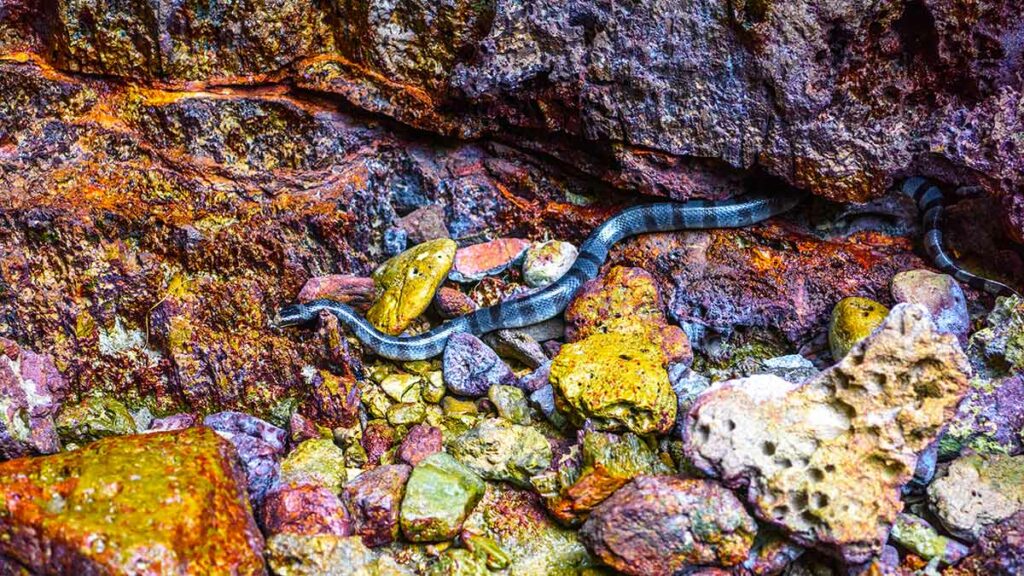
Facts About Sea Snakes
There are over 62 different species of sea snake, and they mostly live in the warm coastal waters of the Indian Ocean or the Pacific Ocean, near land. Australia’s great barrier reef is renowned for the number and variety of sea snake that inhabit its waters, some of them living completely in the water, and others both terrestrial and aquatic.
Sea snake diet
Sea Snakes feed on fish, fish eggs and their favorite food eels, which they inject with their venom and swallow whole. They can remain submerged underwater four up to an hour at a time without surfacing for air.
Are sea snakes poisonous?
Almost all sea snakes are venomous, however not all are aggressive, often attacking only when provoked. Since sea snakes control the amount of venom they inject when they bite, the chances of survival are often good and It is estimated that 75-80% of Sea Snake bites are “blanks” where venom was not used. However some of the most potent venoms of all snakes are found in a few species of sea snake, often being compared to up to two times the toxicity of a terrestrial rattlesnake, with the most toxic sea snake being the banded sea krait.
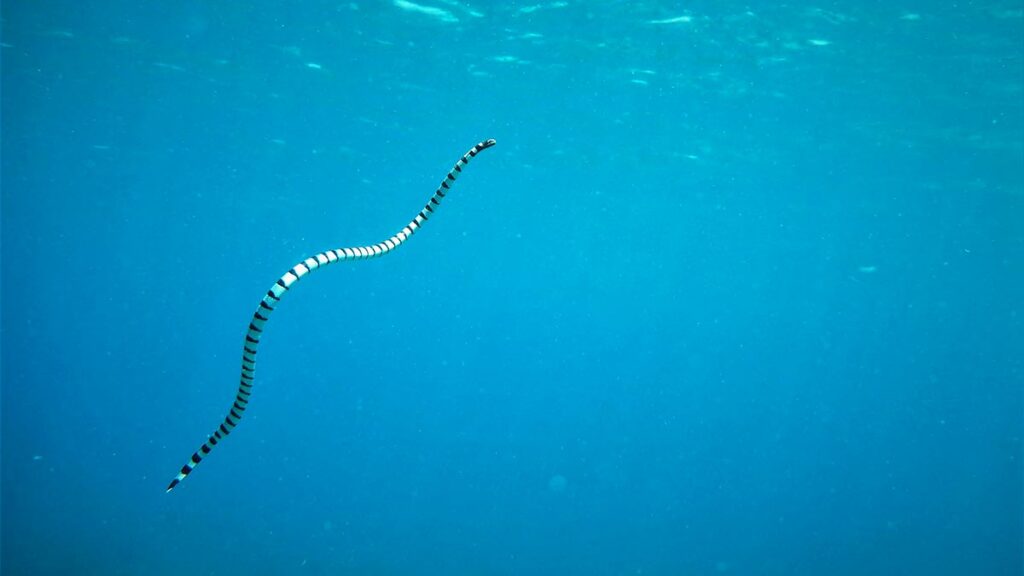
Sea snake bites
Most sea snake attacks are reported by fisherman that accidentally haul in the snakes in their fishing nets and get bitten while handling them. Scuba Diver incidents with sea snakes are rare and often provoked or when the creature is handled, or when the snake is disturbed during mating/nesting season when they become aggressive and territorial. Known to be very curious when it come to floating objects and elongated objects like floating debris, sticks, a diver’s regulator air hose or fins, they often come to investigate. If approached by a sea snake while scuba diving always remember that they are potentially very dangerous, and should be treated with caution. At the same time one should not panic and, just carry on swimming, and the snake will do the same.
A sea snake’s fangs can easily penetrate a diver’s wetsuit despite myth that they do not possess large fangs (which is true but not small enough). Often immediate pain or effects of the snake bite are not obvious and symptoms that can occur after 30 minutes to several hours post-bite include pain, stiffness, and tenderness of muscles, headache, a thick-feeling tongue, thirst, sweating, and vomiting. If bitten, seek immediate medical assistance.

